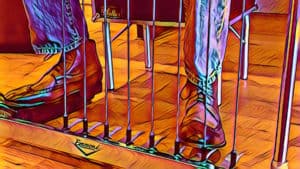As an Amazon Associate Playpedalsteel.com earns from qualifying purchases. This page contains affiliate links.
When you practice left foot pedal technique on pedal steel guitar, keep in mind that a major goal is to build muscle memory in your left foot and ankle.
You’ll often want to be able to engage one pedal or two pedals accurately at anytime. Also, it is nice to be able to engage a pedal, then “rock” into a pedal next to it to create certain musical effects…
Positioning Your Foot and Heel
Try to become aware of where your foot is in relation to the pedals when they are not engaged. Also, think about the position of your heel in relation to the pedals too.
The heel is usually always anchored to the ground when using your left foot to engage pedals. The front of the foot usually hovers over the pedals that will be engaged.
Sometimes you’ll want to pick up your whole foot to move to a new set of pedals in a further position. However, oftentimes pivoting your foot at your heel will be the most efficient way to move between pedal positions.
Practice continually having the front of your left foot hover over the two pedals that you will most often use. For the E9 neck, this is usually the A and B pedals on an Emmons setup, or the B and C pedals for Day setup.
By always having the front of your foot hovering over these pedals, you’ll have the ability to instantly engage one or both of them. This enables you to do so without also having to pick your foot up off the ground, which can slow you down.
To do this, have your heel on the ground at a spot that allows you to step down with your toes and hit the pedals in a comfortable position.
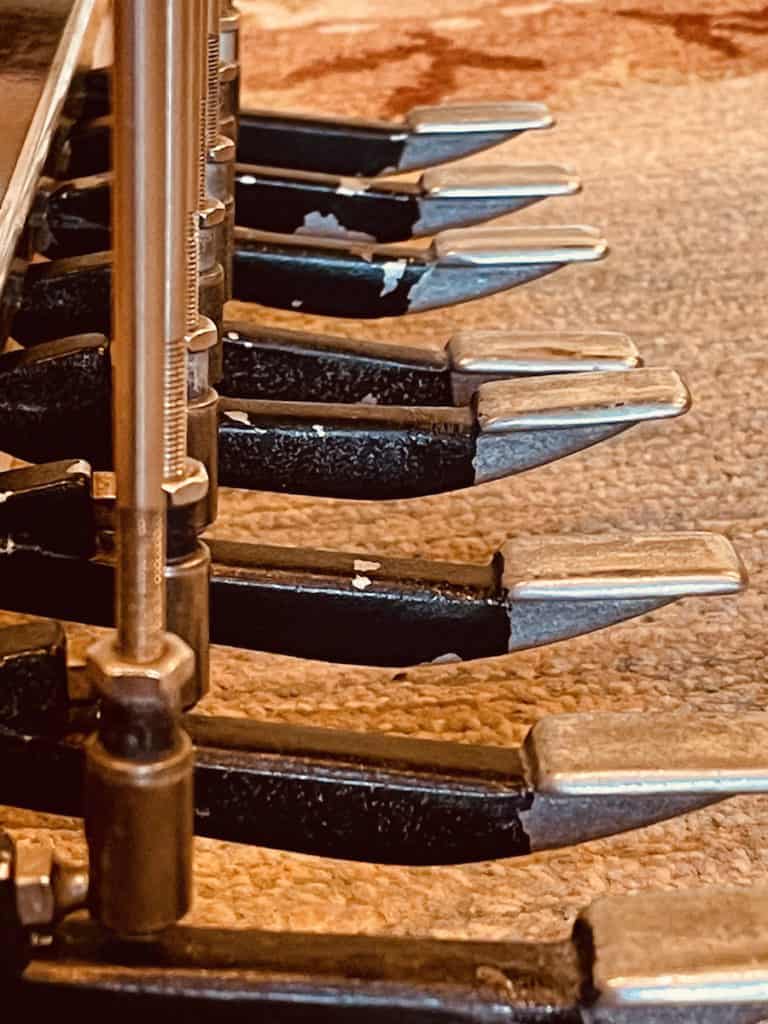
The position of your foot against the pedals is usually where the toes meet the foot. This is helpful so that you can use both your foot and toes to manipulate the pedals.
Getting Used to the Motion and Position
A lot of E9 playing styles and techniques will require the fast engagement and release of pedals, so always having your foot ready to do so is important.
It will be physical to do this if you’re not used to positioning your foot this way, but this will become easier with time.
Holding your foot up like this isn’t a motion that we’re used to doing often with our body, but we do something similar when we drive a car.
Usually, we keep our right foot hovering over the gas or brake pedal, with our heel on the ground, so that we may depress either pedal when we need to.
It can be helpful to think of our left foot in a similar fashion when learning left foot pedal technique for pedal steel.
Pivoting the Left Foot
If you’re used to always having your foot hovering over two pedals, and can engage them accurately, you can pivot your foot at your heel to move the foot over two new pedals.
For instance, if you’re comfortable hovering and using your foot for the A & B pedals, you can do essentially the same pedal work and techniques just by hovering your foot over the B & C pedals.
To quickly have your foot hovering over two new pedals is usually just a matter of pivoting your foot at your heel.
This is a quick and efficient motion that won’t require you to pick your foot up off the ground, and you can still use the muscle memory your foot has gained over controlling two pedals.
A good way to practice this may be to engage the A & B pedals on the E9 neck. Then as quick and smoothly as possible, disengage them and engage the B & C pedals by pivoting your heel.
It can be really beneficial to be able to engage the A & B pedals and B & C pedals almost instantly at any position when you’d like to.
Engaging One Pedal at a Time
To engage single pedals at a time, you’ll still have your foot hovering over two pedals, but you’ll angle and tilt your foot so that it only hits one pedal out of the two.
This takes some practice and getting used to, but being able to do so will be very rewarding for pedal playing.
If you’re using the A and B pedals for instance, and your foot is hovering over both like mentioned earlier, try engaging the A pedal without hitting the B pedal. I posted the major modes for the open pedal position on the E9 neck, which can be great for practicing this type of movement.
It is usually a good idea to make sure your heel doesn’t lift off the ground too. Then release the A pedal and do the same with the B pedal.
You’ll notice that the foot will have to be positioned in such a way for each motion so that it doesn’t accidentally engage the other pedal.
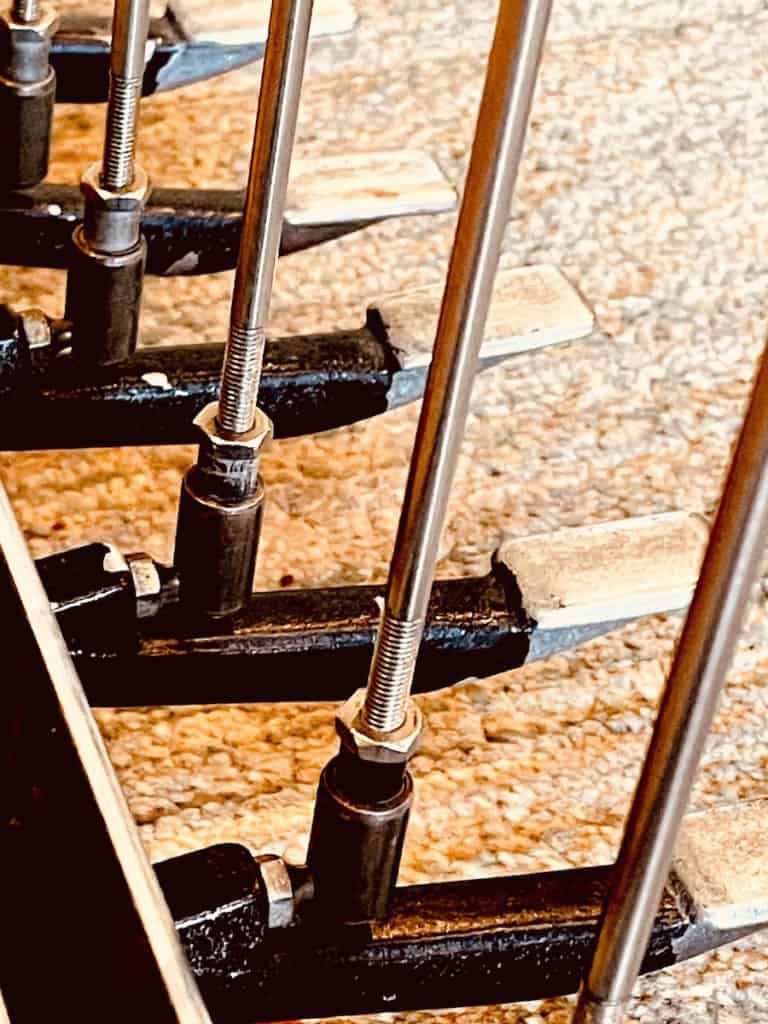
Rocking the Pedals
A lot of pedal steel playing utilizes the “rocking” of pedals, especially on the E9 neck.
This means having one pedal engaged, then rocking the foot to engage a pedal next to it while still holding the other pedal down.
For instance, you can have the B pedal engaged, and then rock the A pedal up and down while keeping the B pedal depressed the whole time. This is great to do in the A & B pedal position on the E9 neck, where there is a lot of options for pedal expression without moving the bar.
This is commonly heard in many styles of music with the pedal steel, and has become a recognizable part of its sound as an instrument.
Goals for Left Foot Pedal Technique
Here are great goals for left foot pedal technique. Let’s use the A and B pedals as our main position for these examples:
- Be able to hover your foot over the pedals for an extended period of time. Gain dexterity so that you can do this for as long as you’re playing the instrument at a playing session.
- Be able to accurately, quickly, and smoothly engage the A pedal only at anytime.
- Accurately, quickly, and smoothly engage the B pedal only at anytime.
- Be able to do the same with both the A and B pedals at anytime.
- Be able to pivot your heel quickly and accurately to do these techniques with the B and C pedals too.
- Have the ability to engage the B pedal, then rock into the A pedal, engaging it while keeping the B pedal depressed the whole time. Be able to release the A pedal in this manner too.
- Be able to create the same rocking technique with the B and C pedals.
- Invert each rocking technique. For instance, instead of rocking into the A pedal with the B pedal depressed, you rock into the B pedal with the A pedal depressed.
Left Foot Practice Exercise
If you engage the A pedal on the E9 neck, which raises the pitch two half steps on strings 5+10, and fret the bar at fret position 12, you have a C# note on these strings.
Now if you slowly disengage the pedal, while sliding up two frets, you’ll have the same note (since you disengaged the pedal and moved the bar up two half steps simultaneously).
Since these are the same notes, if you gradually slide between these two positions (engaged 12th fret, disengaged 14th fret), while gradually (dis)engaging the pedal, you won’t hear a change in pitch.
This is easier to do at a faster speed. If you practice this really slowly, it will be very beneficial to your technique.
To do so accurately, you’ll have to avoid microtones by using your left foot in conjunction with the motion. Your foot will need to engage/disengage the pedal just as slow as the bar moves, until you reach your destination.
Experiment with this idea for a little bit each day, and you’ll start having ankles and feet made of steel!
Thanks for checking out this page, hope it is helpful and makes playing more enjoyable! If you’re interested in diving deeper into playing E9 pedal steel, check out these resources and guides…
The Chord Guide for E9 Pedal Steel (E-Book, Digital Download)
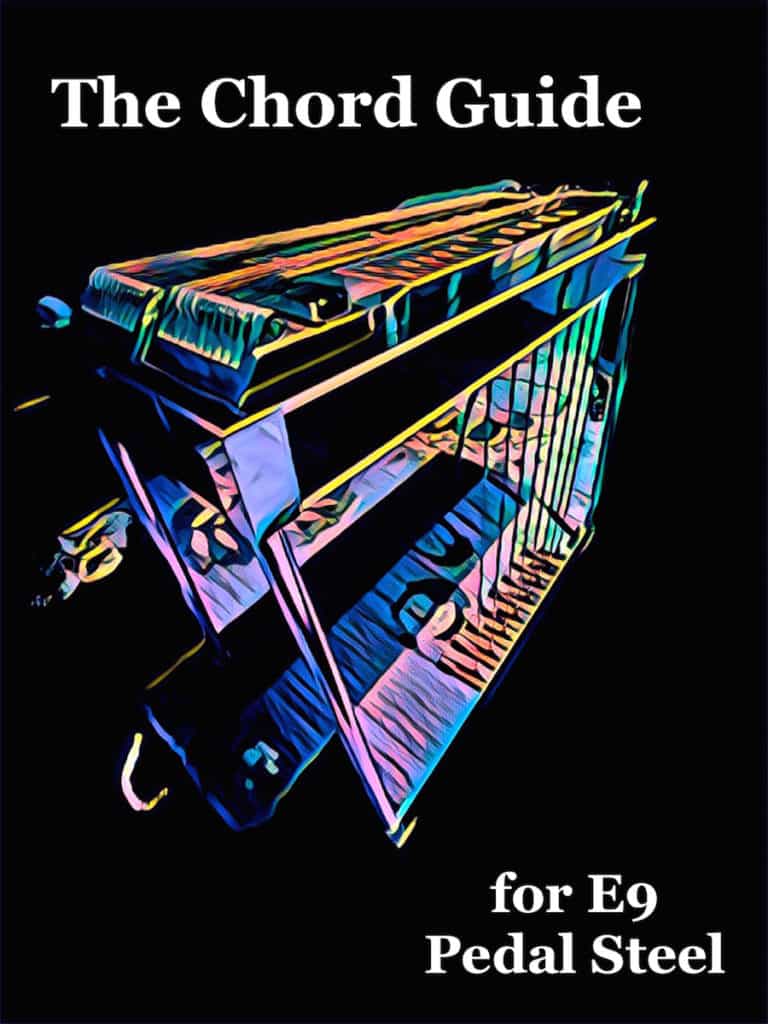
Learn the chords on the E9 neck in a way that makes playing simple and enjoyable…
- Almost Every Chord You’ll Ever Need for E9
- Intuitive and Easy to Use
- Make Use of Pedal and Lever Combinations
- Example Tabs of Chord Movements
- Easily Utilize the Nashville Number System
- Great For Any Key and Style of Music
Includes a bonus section of over a hundred pages of extra chord charts, key references, and more!
You may also like…
200 Country Riffs & Licks for E9 Pedal Steel
Add these country licks to your playing repertoire…
- Easy to Read Format
- Includes Rhythmic Notation
- Playing Over Chord Changes
- Great for Country, Alt-Country, & Honky-Tonk Styles
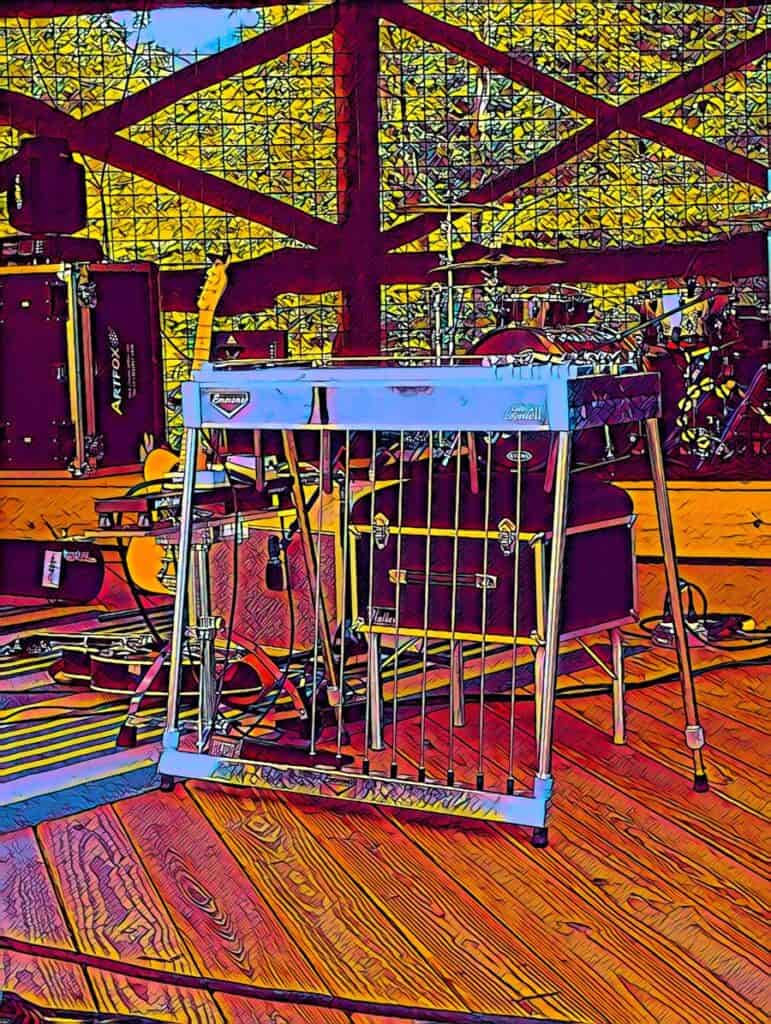
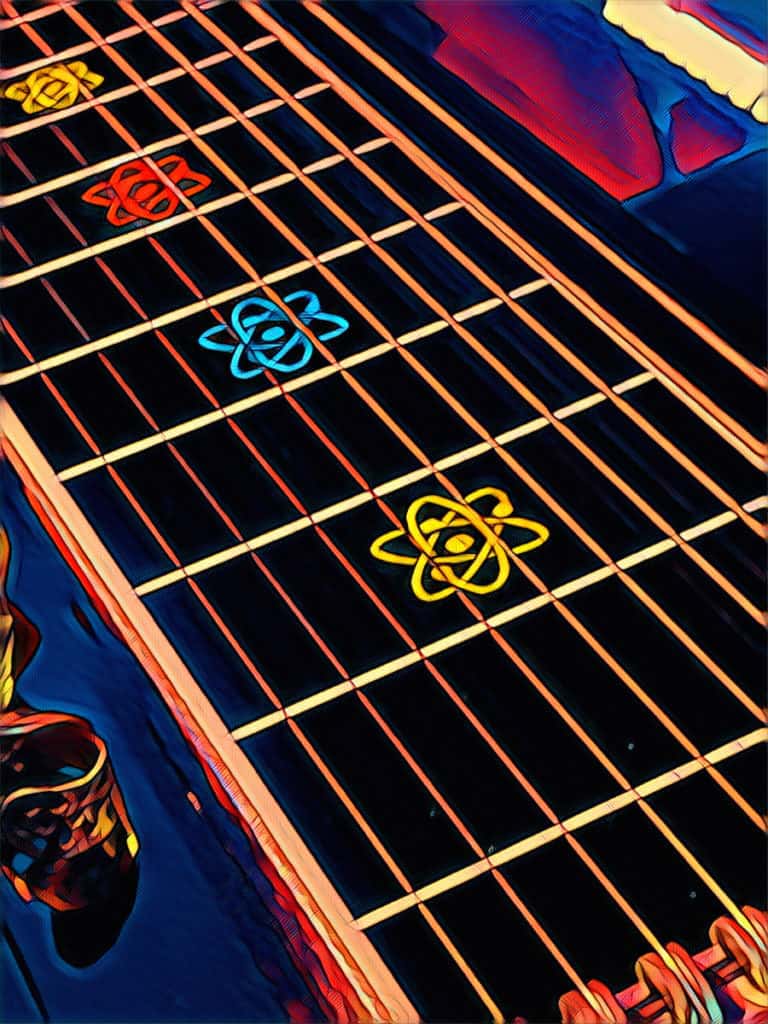
The Scale Book for E9 Pedal Steel
Over 1,000 Pages with Tabs and Diagrams!
- Easy to Use Reference for Practicing
- All Major and Minor Pentatonic Scales, Modes, Major Scales
- All Keys, and Covers the Fretboard
- Includes Pockets of Scales
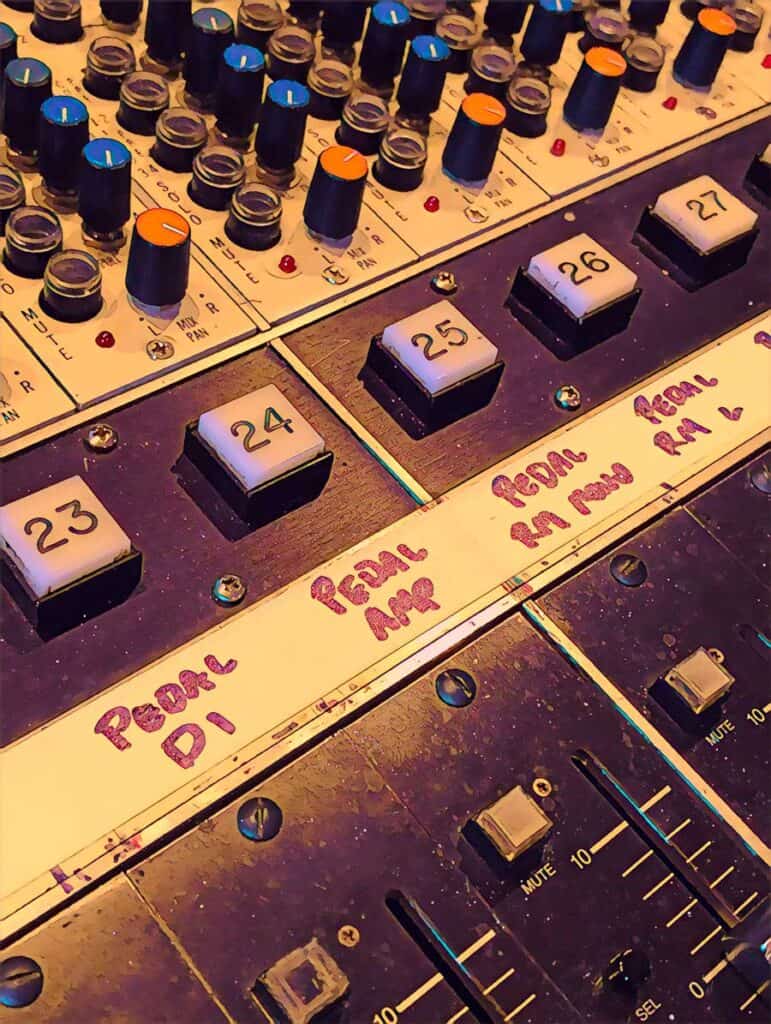
Harmonized 6ths
- Hundreds of Riffs, Licks, and More
- How To Play Sixth Intervals on the E9 Neck – Over Any Chord
- Utilizes The Pedals and Knee Levers
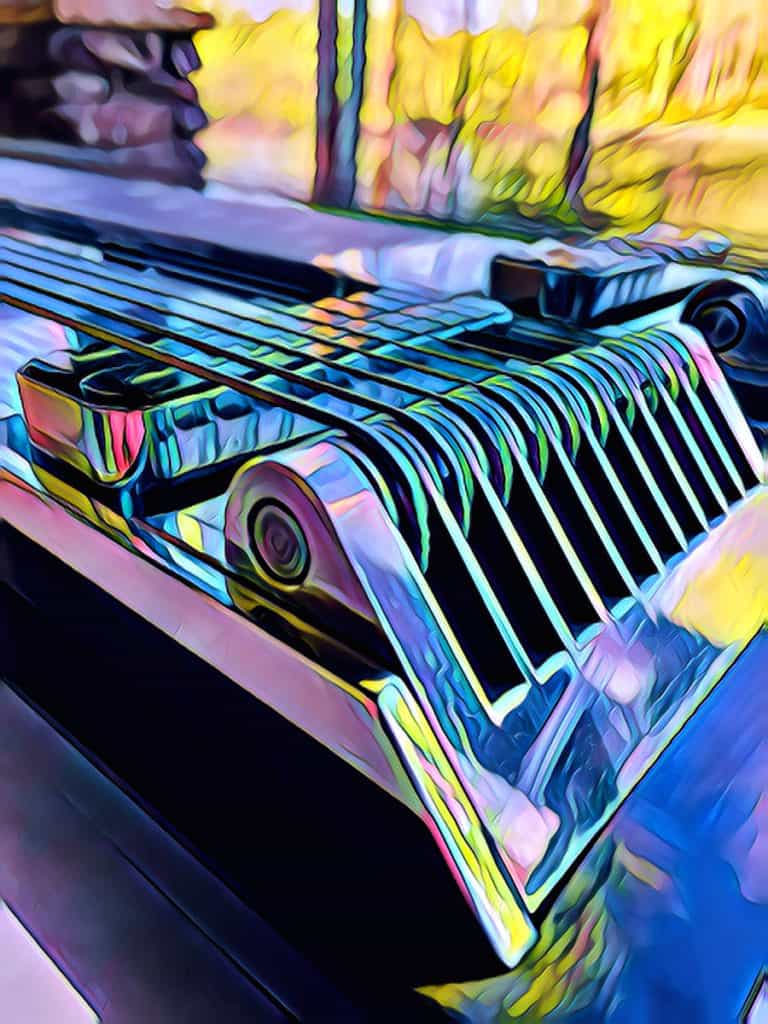
Right Hand Picking & Blocking
- An In-Depth Guide to Picking and Blocking
- Perfect Your Technique
- Includes Graphics, Illustrations, & Practice Exercises
